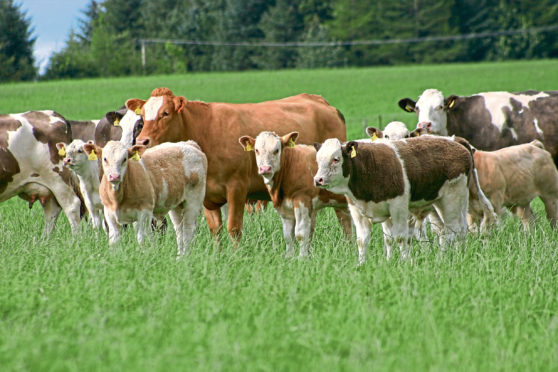Meat processors have been accused of trading away the future of the beef industry for pennies.
The National Beef Association (NBA) claims every 1p per kg price cut for cattle is removing more than £110,000 from UK beef farmers’ pockets, and ensuring more suckler cows disappear from British farms and crofts.
It said the lack of competition in the UK beef industry was now “totally evident” with bid prices from major processors staying on a par and always moving in the same direction.
“Talk of further reductions next week demonstrates the contempt that processors are showing for farmer producers,” said NBA chief executive, Chris Mallon.
“Another 5p/kg drop takes away another £500,000 from struggling family businesses.”
He said the reasons being given by procurement officers for the price cuts all appeared to come from the “big book of processor excuses”.
“Reasons have included poor trade for offal, poor trade for hides, and struggling consumer demand,” added Mr Mallon.
“All would have some credence if these same companies were not importing product to fill UK supermarket shelves.”
He said beef producers were facing a “complete imbalance of power” and they had no access to an ombudsman to query trading practices.
“Our concerns are wide-ranging, and include origin of imports and subsequent labelling, Brexit stockpiling and the subsequent unloading on to the UK market, and the absence of contracts that leave profit, but put all the risk on the producer,” added Mr Mallon.
“But we are also seeing market manipulation, for example one consignor being told there is a three-week waiting list, while another is approached for additional cattle for immediate consignment.
“Retailers are also continuing to demand commercially sensitive information from farmer suppliers.”
He called on the environment, food and rural affairs (Efra) committee in the House of Commons to investigate the problems in the beef sector as a matter of urgency. “We feel our concerns are worthy of time and investigation at committee level with Efra, and as such we have requested a meeting to air our concerns,” added Mr Mallon.
“The future of the industry is being damaged, and the viability of the sector is at risk as numbers drop which will ultimately hit food security for British consumers.”
The Efra committee declined to comment, however the Scottish Association of Meat Wholesalers (SAMW) responded to the criticism.
SAMW executive manager, Martin Morgan, said: “The radical proposals we submitted to the Scottish Government last month, which are designed to revitalise the cattle herd in Scotland, clearly demonstrates SAMW’s support for the beef sector.
“There is no doubting that trading conditions are tough right now due to a combination of factors but with cattle numbers in Scotland at a historic low, competition to procure good quality stock has never been more intense.”
The SAMW proposals included a call for beef calf scheme support payments to be increased to £250 for every beef calf produced.
